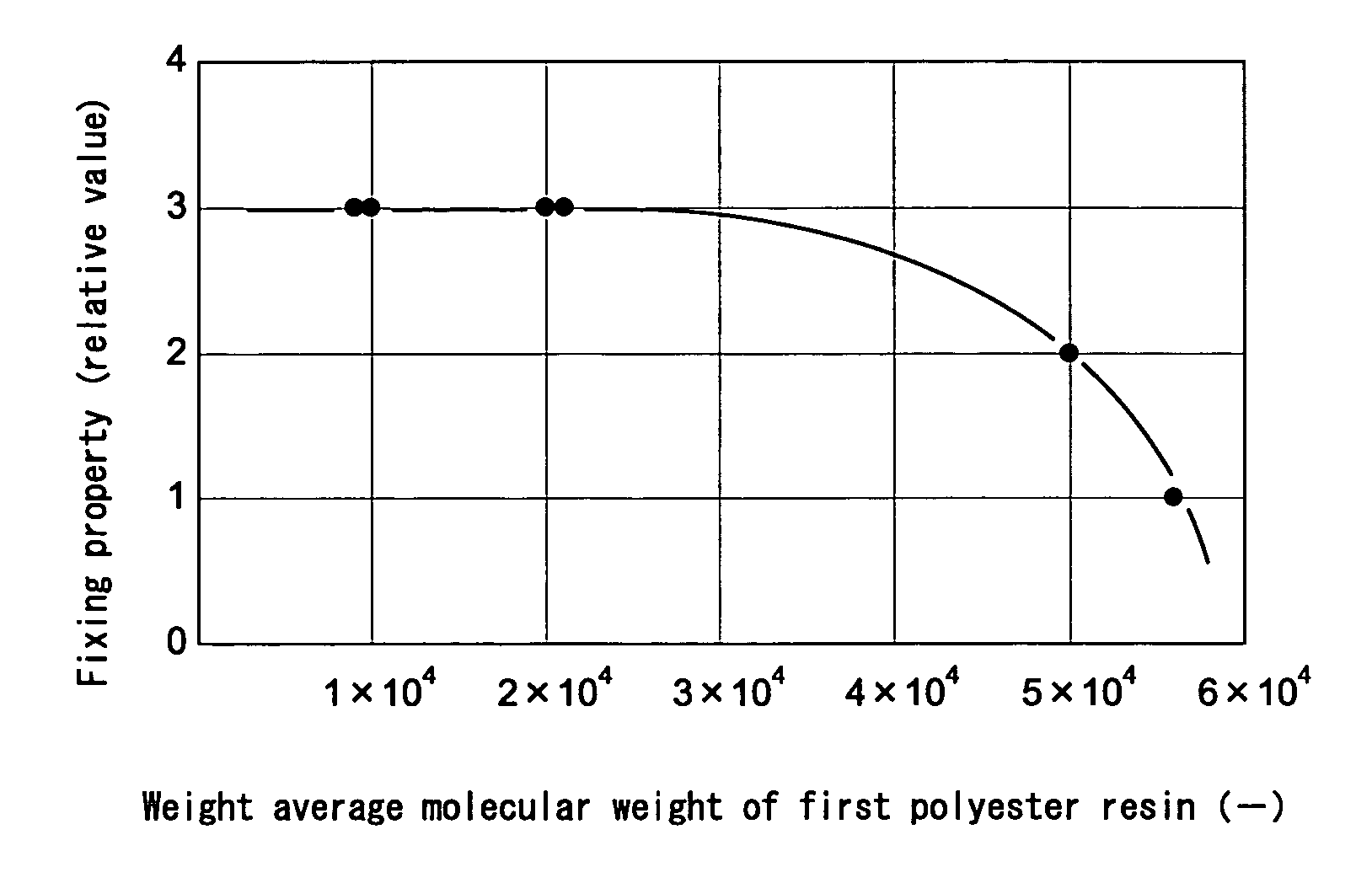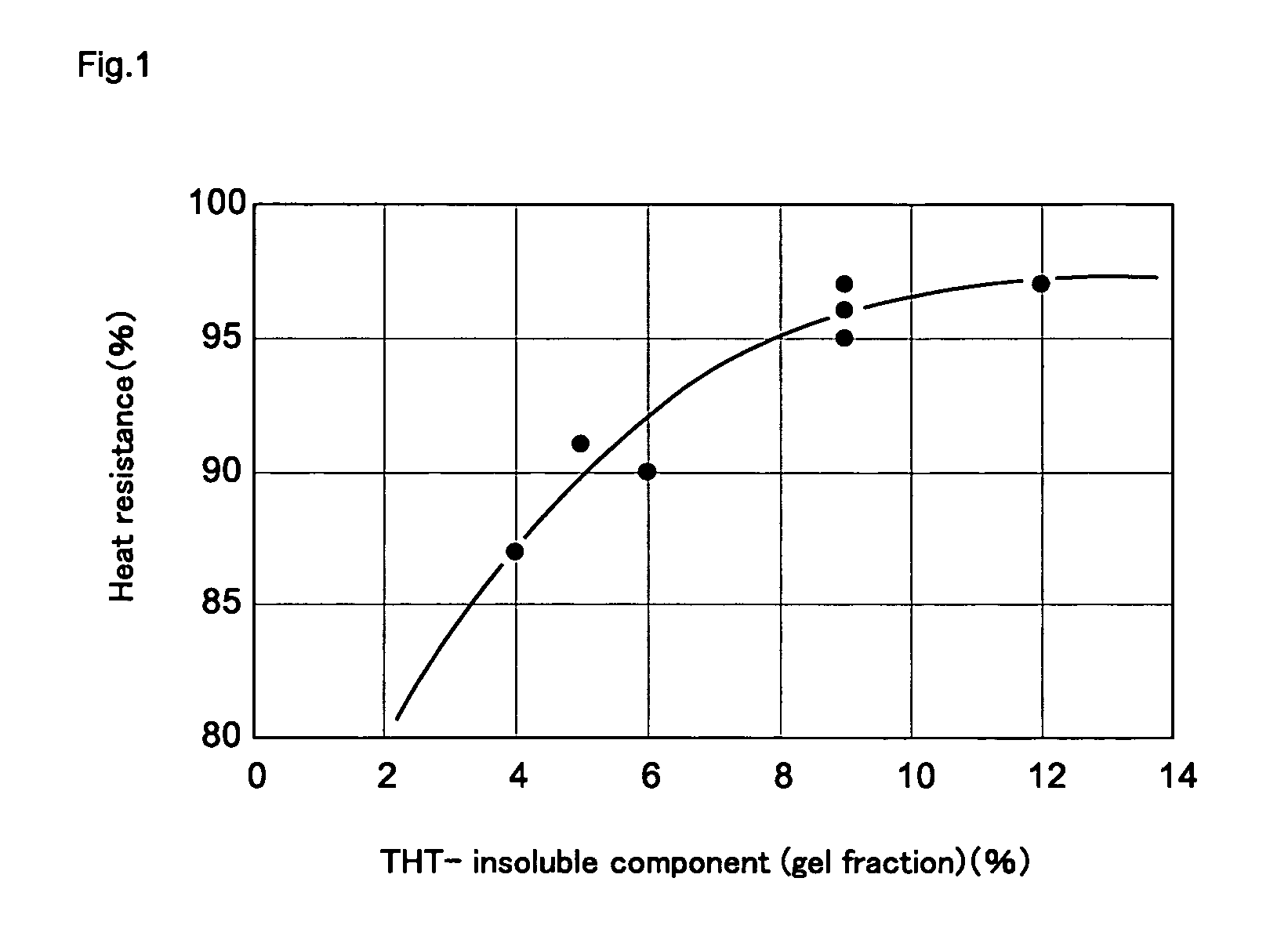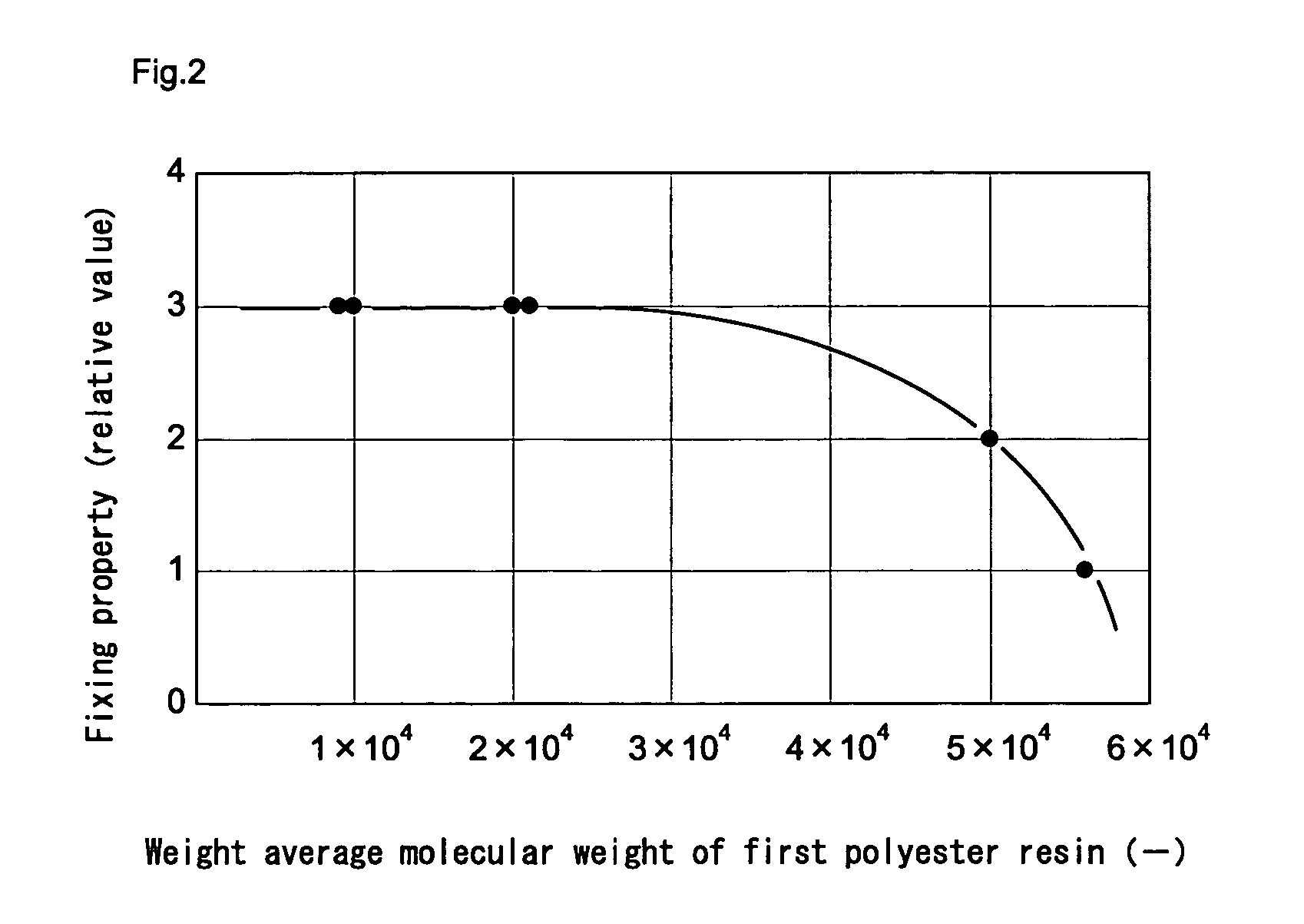Magnetic Monocomponent developing toner and image forming method
- Summary
- Abstract
- Description
- Claims
- Application Information
AI Technical Summary
Benefits of technology
Problems solved by technology
Method used
Image
Examples
first embodiment
[0060] A first embodiment is directed to a magnetic monocomponent developing toner which includes 45 to 65 weight % of a binder resin, 1 to 15 weight % of wax and 30 to 50 weight % of magnetic powder with respect to a total quantity of the toner, wherein the binder resin contains a first polyester resin having a weight average molecular weight peak within a range from 1.0×104 to 5.0×104 and a second polyester resin having a weight average molecular weight peak within a range from 1.0×106 to 5.0×106 as the binder resin and, at the same time, and contains 5 to 30 weight % of a tetrahydrofuran-insoluble component with respect to the total quantity of the binder resin and, the wax is made of an ester compound or a Fischer Tropsch wax and, at the same time, the wax has melting property that a temperature range from starting of melting to finishing of melting is set to 70 to 95° C.
1. Basic Constitution
[0061] As the basic constitution of a developer which is used in the first embodiment...
second embodiment
[0193] The second embodiment is directed to an image forming method which is characterized in that the magnetic monocomponent developing toner of the present invention is used in a developing unit which includes a developer carrying body which carries a developer and transports the developer to a developing region, and a developer layer thickness restricting member which restricts a layer thickness of the developer carried on the developer carrying body, and arranges a magnetic body in the vicinity of the developer carrying body.
[0194] Hereinafter, the constitutions of the present invention which are explained already in conjunction with the first embodiment are omitted and the explanation is made by focusing on points which make the second embodiment different from the first embodiment.
1. Image Forming Apparatus
(1) Constitution
[0195] In performing the image forming method according to the second embodiment, it may be possible to favorably apply the image forming method to an ...
example 1
1. Formation of Toner
(1) Formation of Toner Particles
[0204] First of all, a plurality of polyester resins is used as a binder resin and magnetic powder or the like is mixed into the binder resin and, thereafter, these resins are melted and mixed.
[0205] That is, first of all, polyester resins A and B are respectively formed. With respect to the polyester resin A, 2000 g of 2.2 mol adduct of bisphenol-A propylene oxide, 800 g of 2.2 mol additive of bisphenol-A ethylene oxide, 500 g of terephthalic acid, 600 g of n-dodecenylsuccinic acid, 350 g of trimellitic acid anhydride and 4 g of dibutyl tin oxide are accommodated in a reaction container and, thereafter, these components are subjected to a condensation reaction at a temperature of 220° C. for 8 hours while being agitating in a nitrogen atmosphere. Thereafter, the condensation reaction is continued until a softening point reaches at 155° C. under a reduced pressure.
[0206] Further, with respect to the polyester resin B, 2800 g...
PUM
| Property | Measurement | Unit |
|---|---|---|
| Temperature | aaaaa | aaaaa |
| Temperature | aaaaa | aaaaa |
| Fraction | aaaaa | aaaaa |
Abstract
Description
Claims
Application Information
 Login to View More
Login to View More - R&D
- Intellectual Property
- Life Sciences
- Materials
- Tech Scout
- Unparalleled Data Quality
- Higher Quality Content
- 60% Fewer Hallucinations
Browse by: Latest US Patents, China's latest patents, Technical Efficacy Thesaurus, Application Domain, Technology Topic, Popular Technical Reports.
© 2025 PatSnap. All rights reserved.Legal|Privacy policy|Modern Slavery Act Transparency Statement|Sitemap|About US| Contact US: help@patsnap.com



